Raising Water Consciousness through
World’s Biggest Photo Exhibition and
Largest collection of Photo Stories on Water
Photo Stories | Drinking Water
Kohima: The City of Water Cables
Nandita Singh and Om Prakash Singh
1 March, 2017
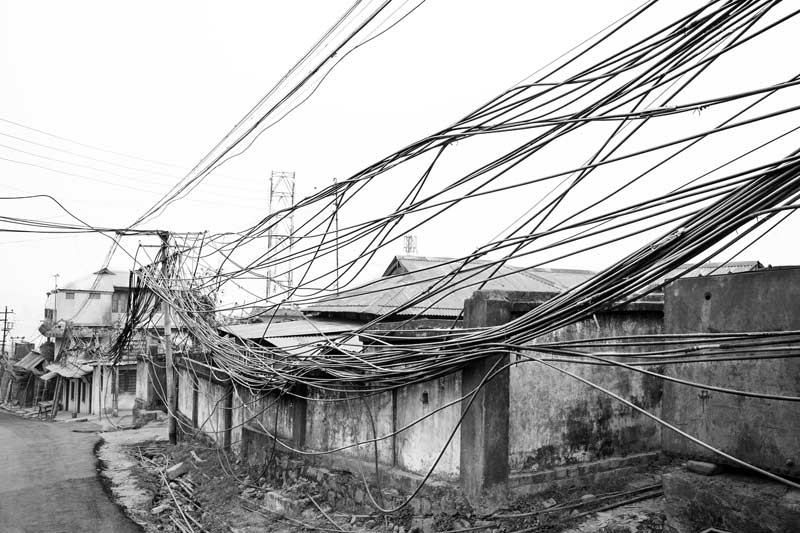
Kohima - the capital of Nagaland - is a hill city in North East India. The average annual rainfall here is high, varying from 1500 mm to 2800 mm, most of which is received during the monsoon season. Despite abundant rainfall, Kohima has been in the grip of water crisis since long. Only about 40% population is supplied by the government distribution network operated and maintained by the Public Health Engineering Department (PHED), that too at a very low per capita rate. For the remaining population, one of the common alternatives is the expensive private water cable networks that distribute water through thin plastic pipes criss-crossing the city in bunches. There exists no systematic infrastructure to support these cables and these are just bundled together to run along and between buildings and houses, on the sides of streets and motorable roads, or even hung across telephone and electricity poles. The latter entails much risk as water leakage can cause damage to these fundamental services in the city. Despite the cost and risks, even these sources are unreliable because the flow in the source springs become meagre or these dry up completely early in the lean season, thanks to large-scale deforestation in and around the city for construction, logging and agriculture. This forces citizens to spend even more for water, buying water from private water tankers which is equally expensive. On an average, a family of five-six members may thus spend anything from Rs 2000 to Rs 3000 towards water bills alone in a month. Some houses may have rainwater harvesting structures to support their water needs. Given this scenario, it is more than evident that the human right to water of the city’s populace is in great jeopardy. Women are unable to efficiently undertake their domestic daily chores that essentially require water. Health and hygiene of the family suffers, in turn affecting monthly expenditures, physical capabilities, livelihoods and children’s education. Though some interventions such as tapping additional rivers and streams for augmenting city’s water supply are being undertaken by PHED, the pertinent question is: what is a sustainable solution for this hill city and many others in the region, also considering the impact of climate change? This photo story presents different facets of the cable water supply in Kohima, further highlighting the need to develop sustainable water supply alternatives for the hill cities and towns of India. The title photo shows a bunch of water cables running across a long row of houses in one of the localities of Kohima.
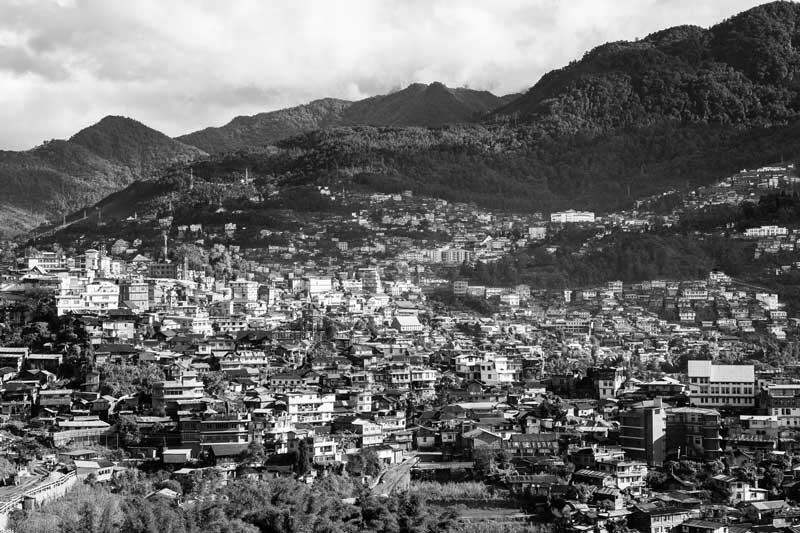
Kohima is a picturesque city nestled in high hills at an elevation of about 1468 m above mean sea level. A linear city developed along a ridge, it is the second largest city in the state, with a population of 267,988. Originally known as Kewhira, it was founded in 1878 when the British Empire established its headquarters of the then Naga Hills. In recent decades, water crisis has increasingly become a challenge for the residents of this city. According to the Bureau of Indian Standards (BIS), a minimum of 70 to 100 liters per capita per day may be considered adequate for domestic water needs of urban communities, apart from non-domestic needs such as flushing. However in Kohima, water is supplied by PHED once in three days and the per capita daily figure can be as low as 18 liters especially in the lean months of December through May when only about 150 mm of rain is received, making the water sources go dry.
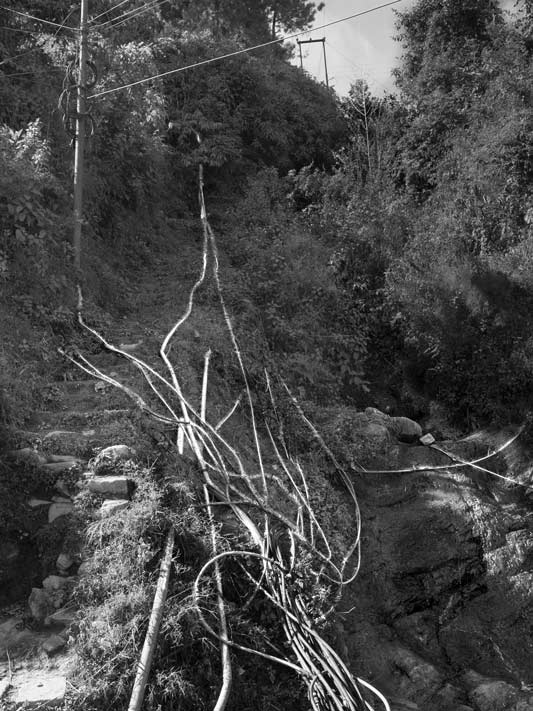
The sources of water for the private water supply networks are springs and streams up in the hills which are directly tapped through the pipes and distributed through gravity at the local scale. The water quality of most of the springs and streams in the uphill areas is perceived to be good by the users.
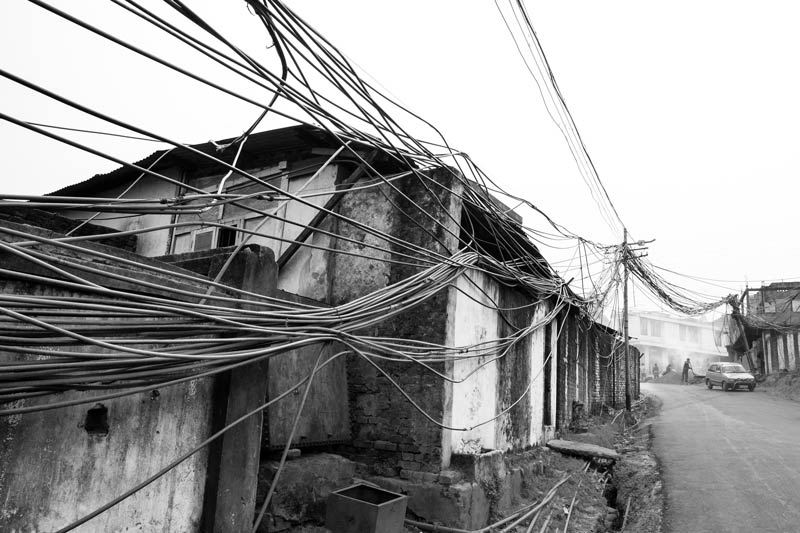
The private water cable network is expensive, costing a nonrefundable fee of about Rs 4000 for installation and an additional monthly bill of Rs 350 or more. When these cables also run dry, water from the tankers can cost about Rs.700 per thousand liters. Such high rates makes water access inequitable, with the less privileged as the ones suffering the most. They have to walk long distances to fetch water physically from community springs and wells because they can't afford the exorbitant costs of buying water from private suppliers.
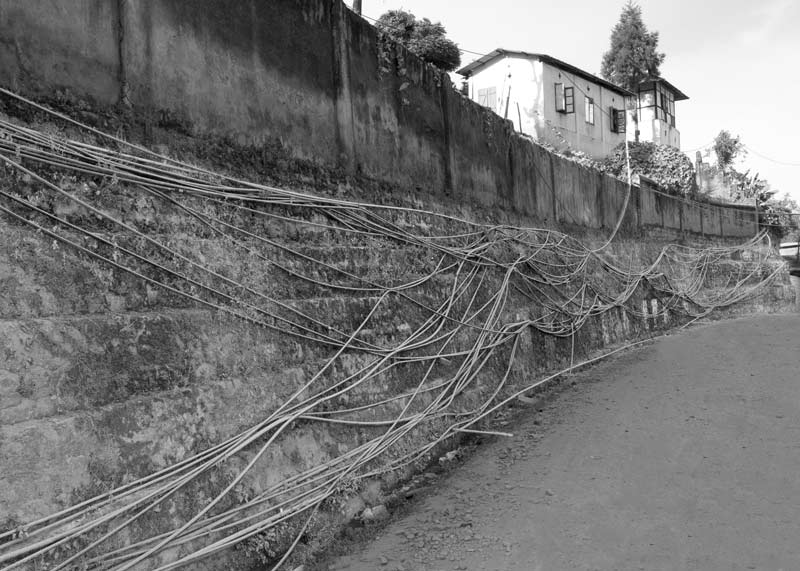
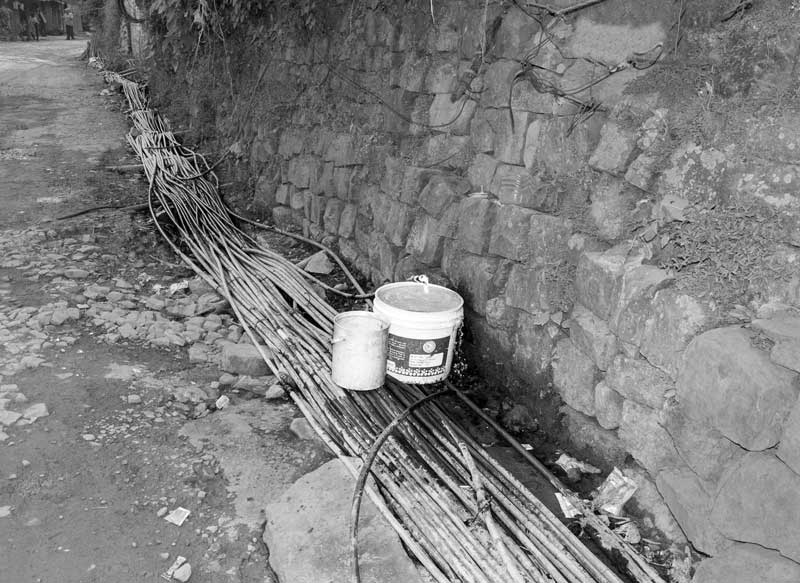
The water scarcity especially during the lean season may force individuals to willfully damage the cables for stealing water as can be seen in this photo, where buckets are being filled in the midst of the road from a cable pipe. This may escalate conflict and even lead to violence between different groups.
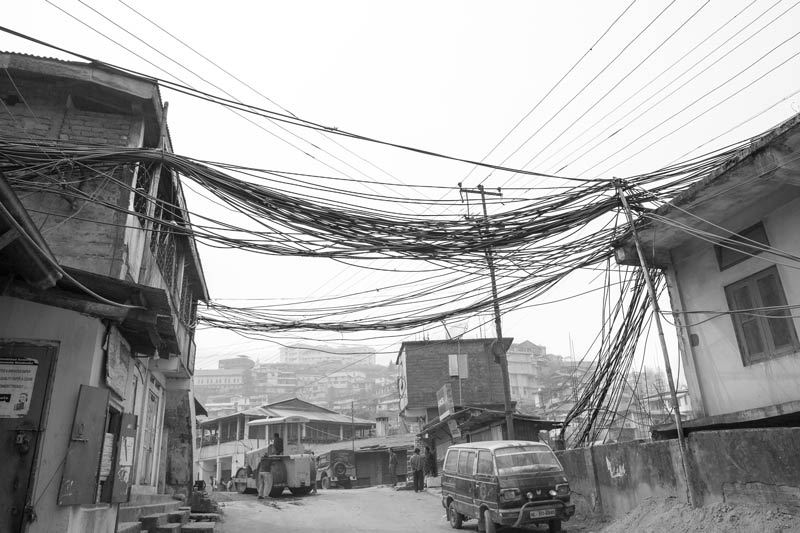
In the absence of any supporting infrastructure, the water cables are just bundled together and made to hang untidily over and between buildings, imparting an ugly look to the city.
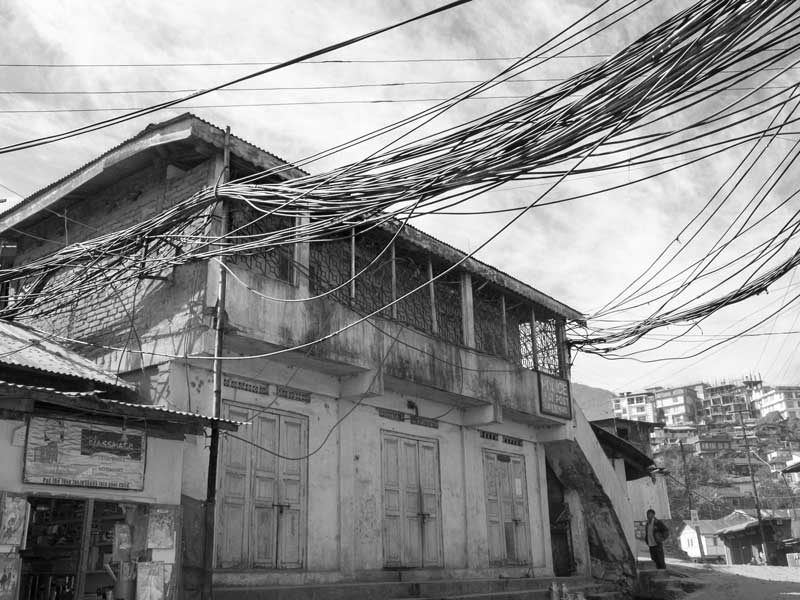
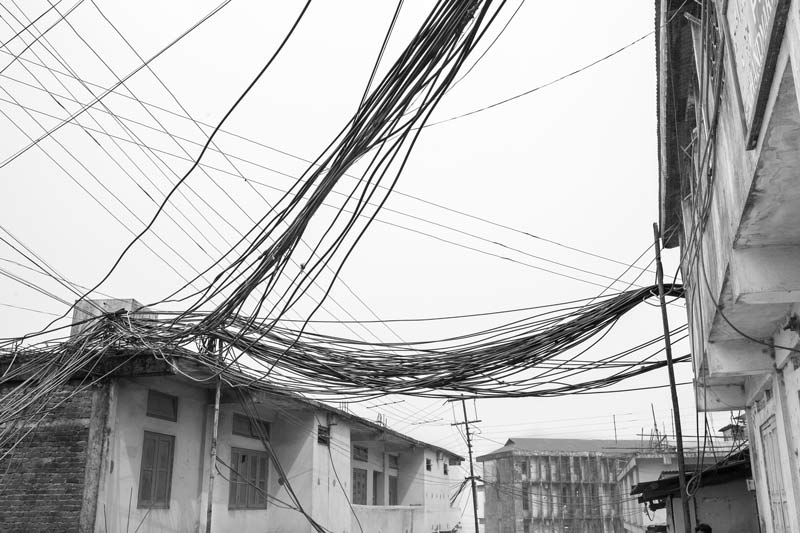
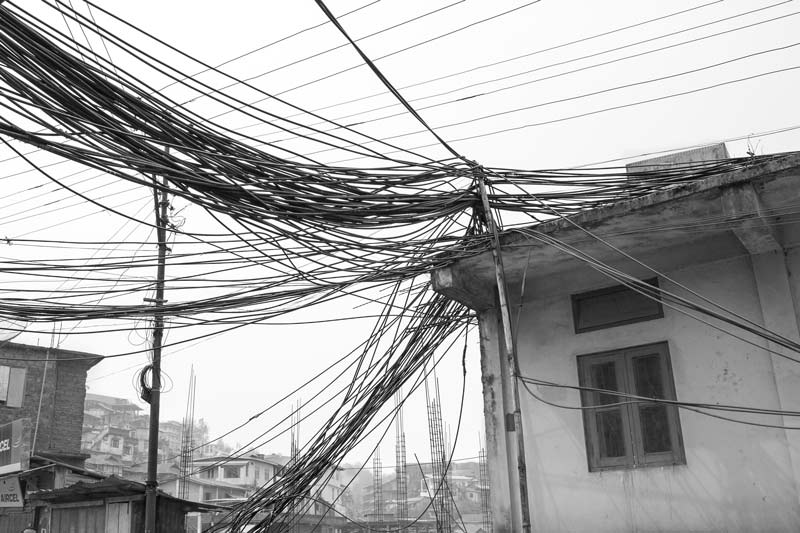
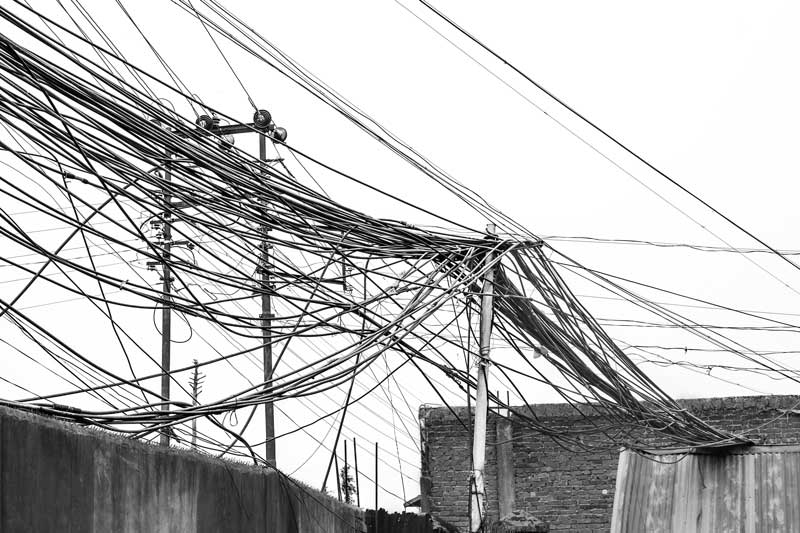
Since there are no exclusive supporting structures for these cables, these are just laid over telephone and electricity poles along the roads. The heavy load of the water-containing cable bundles damages the poles and poses considerable risk of electric shock.
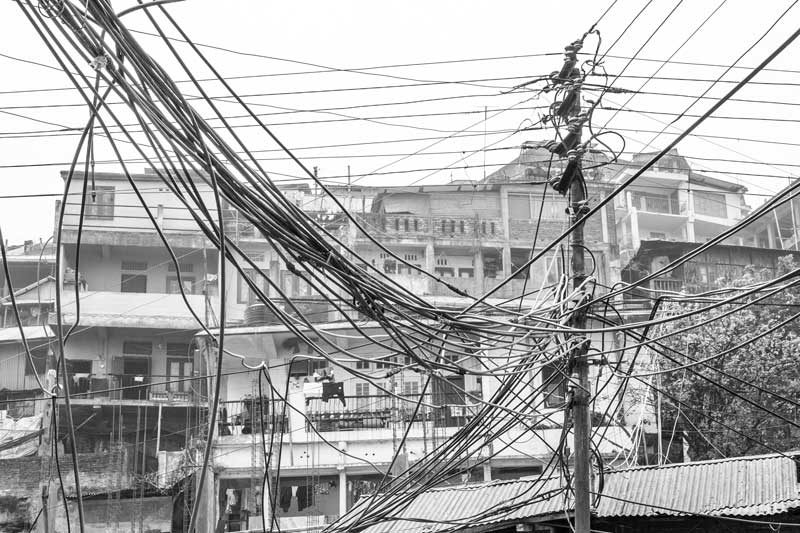
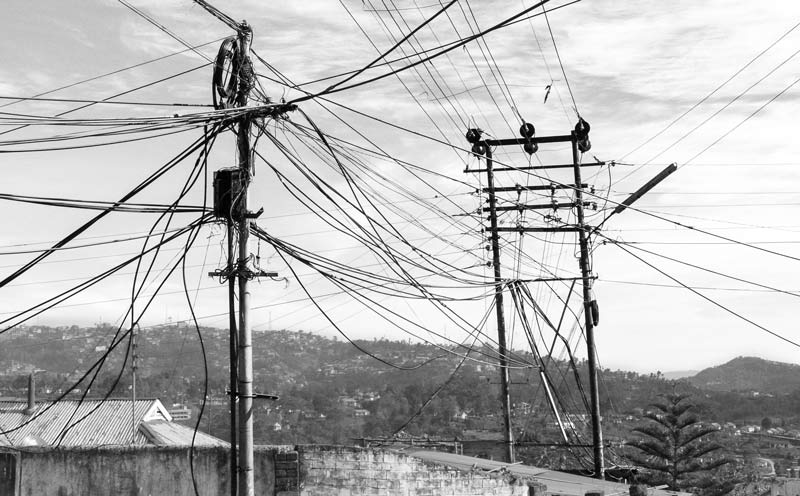
This photo story elaborates how failure of the state machinery to fulfil the human right to water of the residents has led to development of the private water market in the hill city of Kohima, and yet the water woes of the citizens remains unaddressed. The water cable network is expensive and hence breeds inequity. It is also not sustainable since during the lean months when the source springs and streams dry up, there is no water in the cables. The PHED has attempted to augment the water supply for the city as well as improve the condition of the official piped water network. At present, water supply for the city is mainly drawn from the Dzuna water supply scheme which has a designed capacity of 7 million liters per day (MLD), but this source is reliable only during monsoon season. The Phesama water supply scheme supports through a designed capacity of 0.3 MLD, but this source is also seasonal with low yield during lean months. To augment the present supply, a new scheme with a design capacity 3.8 MLD that will pump water from Zarü stream is being constructed. However, this will also not solve the problem because neither will the city’s demand be fulfilled, especially considering the BIS standards, nor will this scheme be sustainable. The crisis is obviously not because of lack of water, but due to poor water management practices. The ‘centralized’ schemes draw water for a large part of the city from a limited source without a realistic estimation on the demand as well as supply sides, besides ignoring the cause of seasonality. Recently, Kohima has been included in the list of ‘Smart Cities’ which would require provision of 24x7 water supply. With the existing arrangements and plans, this appears to be a far-fetched goal. There is need of a sustainable solution that can be reliable, affordable and equitable. Since a number of big and small springs and streams surround the city, smaller ‘localized’ water supply networks would be a welcome solution. These ‘decentralized’ water supply networks would be easier to construct and maintain, besides also being ecologically friendly, as these would be based on gravity and need smaller storage capacities. To improve upon the seasonality risk, there is need to embark upon an intensive afforestation drive to restore the lost green cover. This would enhance ‘green’ water retention in the soil which would be later slowly released as ‘blue’ water in the springs and streams in hilly areas for a longer period in the year. Simultaneously, there is need to intensively promote rainwater harvesting at household level. The situation in Kohima is not an isolated instance. Residents in many other hilly urban centers such as Kiphire in Nagaland and Darjeeling in West Bengal suffer from similar water challenges. A long-term solution along the above lines can help address their water woes in a sustainable manner.